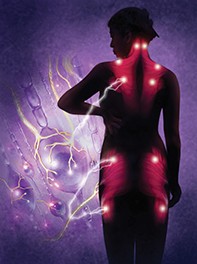Myofascial pain syndrome: a drug-free perspective
Myofascial pain syndrome (MPS) is thought to be the leading diagnosis made by pain management specialists and the leading diagnosis in patients with pain presenting to GPs, being diagnosed in nearly one-third of patients who have musculoskeletal pain disorders. It is, however, not usually specifically diagnosed in general practice. With increased understanding of the nature and features of its clinical presentation, it is possible for GPs to diagnose myofascial pain early and institute appropriate referral, thus helping prevent the all-too-common development of chronicity associated with the condition.
The mainstay of the treatment of MPS is nonpharmacological but there is a role for pharmacotherapy, including for improving sleep as well as for pain relief. This article focuses on the pathophysiology of MPS and its conservative treatment with needle-based interventions and manual therapies.

